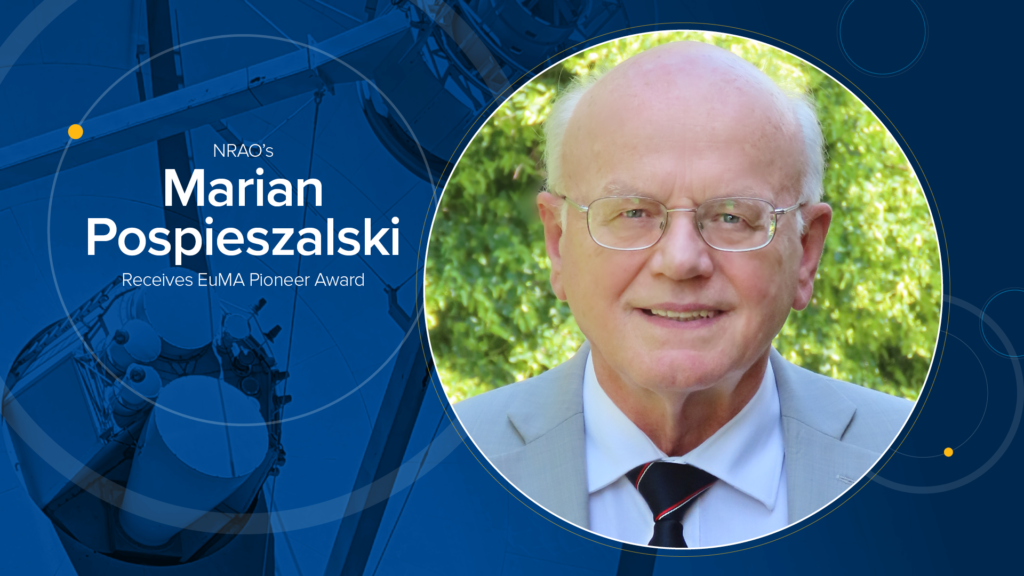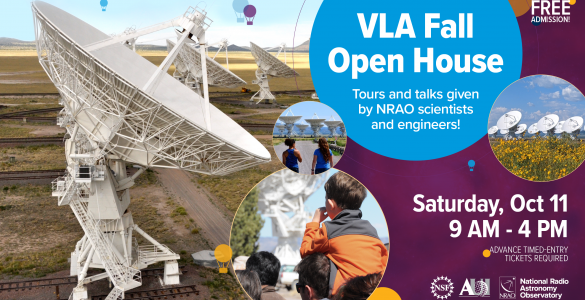The European Microwave Association (EuMA) has announced Marian Pospieszalski— a senior research engineer at the National Science Foundation’s National Radio Astronomy Observatory (NRAO)— as the recipient of its 2022 Pioneer Award. The EuMA Pioneer Award recognizes individuals responsible for noteworthy advances in the field of microwaves that have had a lasting and significant impact on the microwave community.
Pospieszalski has worked as an engineer for NRAO’s Central Development Laboratory since 1984. Since 1990 he has led the design and development of low-noise amplifiers and receivers. His early work resulted in the development of the lowest noise field effect transistor (FET) amplifiers and receivers ever reported. Pospieszalski’s noise model, for which he was selected for the Pioneer Award, revolutionized low noise cryogenic amplifier design and development. Pospieszalski has guided the microwave community’s understanding of the noise properties of FETs for over thirty years.
“I was lucky enough to be the first to take a different look at the modeling of noise parameters of cryogenic radio receivers in 1988,” said Pospieszalski. “The original work in 1988/89 was met with disbelief throughout the microwave community. It wasn’t until the 1990s that it gained wide acceptance and strong support for this new approach. It is especially gratifying to see this work be recognized now just before my retirement.”
Pospieszalski’s noise model has come into widespread use throughout the microwave community and has led to the development of wideband cryogenic receivers with optimal noise performance. All cryogenic amplifiers used in radio astronomy observatories and research institutions around the world including the National Science Foundation’s Karl G. Jansky Very Large Array (VLA), the Very Long Baseline Array (VLBA), and the Atacama Large Millimeter/submillimeter Array (ALMA) were developed using Pospieszalski’s model.
“All of our receivers at NRAO rely on Marian’s noise model. In particular, ALMA’s Band 6 receivers, which were developed at CDL, are widely regarded as some of the most productive radio receivers in the world. They were critical in supporting ALMA’s groundbreaking images of HL Tau’s protoplanetary disk, and the Event Horizon Telescope’s images of the supermassive black hole at the center of our galaxy, SgrA* earlier this year, and of M87* in 2019. Without Marian’s work, none of this would be possible,” said Bert Hawkins, Director of CDL. “We are proud of the discoveries Marian has made and thrilled to see his contributions to the microwave community recognized with such a prestigious honor.”
With the award, EuMA recognizes more than three decades of microwave community achievements made possible in part by Pospieszalski’s innovative approach to low-noise amplification.
“Some 33 years ago, Marian suggested a different approach to modeling of noise properties of field effect transistors. For those working on radio astronomy instrumentation at the time in the 1980s, it had become quite obvious that cryogenically cooled III-V HEMTs would open new experimental frontiers both on the ground and in space, providing they could learn how to design cryogenic amplifiers with optimal noise performance over large relative RF bandwidths,” said EuMA President Frank van den Bogaart. “The introduction of this noise model was a simple answer to that need and is a fantastic contribution to our field which has had a significant and lasting impact on successive generations of radio astronomy.”
The Pioneer Award was presented on September 27, 2022 at the opening session of European Microwave Conference held in Milan, Italy.
The National Radio Astronomy Observatory (NRAO) is a facility of the National Science Foundation, operated under cooperative agreement by Associated Universities, Inc.
Media contact
Amy C. Oliver, FRAS
Public Information & News Manager, NRAO
aoliver@nrao.edu











